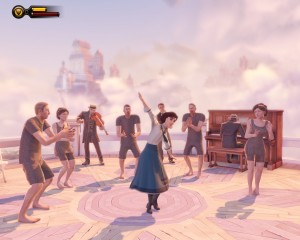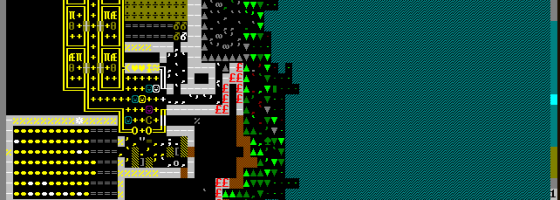Over the last decade, we saw two fundamental shifts in how the Game Industry operates: First was the rise of digital distribution and second was the industry becoming mainstream and accessible. Game design and controls became streamlined and it became easier to learn new games thanks to tutorials and such.
But this was also the time of many gamers citing that the Game Industry was being “dumb down” in the pursuit of money as opposed to creating unique games. And today’s debate is if it’s better to create a profitable game or a long lasting game.
The Bigger They Are…:
The Video Game Industry is arguably one of the fastest growing markets in the world. Following the revival in the mid 80s, we have seen a tremendous leap forward in design, graphics and even the process of making them.
Where video games were once considered a niche experience made fun of by pop culture in the 90s, we have grown to be accepted by millions. With that growth came a new found market as game sales went from thousands to millions of dollars.
With that growth came the rise of game development cost. New graphics engines, massive teams, advertising and more drove AAA cost through the roof. This made the flood of new consumers and profit no longer an added bonus, but a necessity to keep afloat.
And as we’ve talked about in the past, this necessity has put developers and publishers between a rock and a hard place. Making a unique game that doesn’t sell well could be a studio closer with development costs in the millions.

Super Meat Boy is one of many examples of indie games developed by passionate designers that wouldn’t be possible in the traditional AAA market.
Many publishers instead opt for the same practice seen in other industries: appealing to the masses, whether that is military games, extreme violence, sexualization and more.
Whatever the case may be, the video game industry for a lot of people has become big business with massive profit at the decline of creativity.
Very few AAA developers strike out on their own with unique games like Nintendo, but with that said their unique games still fall into the formula of sticking with established brands and design.
While these massive games may be derivative, their sales have become the lifeblood of the AAA industry and companies like Activision, EA and a whole lot more, are kept going thanks to the sales of games like Battlefield, Call of Duty and so on. And if it wasn’t for those games providing the funding, we wouldn’t see AAA studios take the chance on titles like the Last of Us, Bioshock Infinite, Deus Ex, Tomb Raider, etc.
But it’s not gloom and doom for creativity as the Indie market has become a very attractive option for game designers wanting to make games free of the control by publishers.
Creative Freedom:
When it comes to the Indie market, the biggest allure of it is the complete freedom of game development. There are no deadlines, focus groups or publishers breathing down your neck to get in the way of making the game that you want.
In my interview with GOG, I love the response Piotr gave about why people still love classic games, as it resonates with the growing love of Indie games. You can just see the difference in quality between games that were made for a quick buck vs. those that the developer pored over to make the best game that they could.
However with that said there are obvious tradeoffs with being an Indie developer. The big one is financial security; you simply don’t have the funding and access to technology that a major studio has. And while many Indie games do develop great art styles, there hasn’t been an Indie game yet that could compete in the graphics department like Skyrim, Bioshock Infinite and other major games.
With Indie development, more often than not, that studio is putting all their funding on a single title and its success or failure can determine the fate of the studio. A fate that lacks the outreach and sales numbers that an AAA studio would get with the only exception at this time is Minecraft.
Another issue is that complete freedom does have its downsides. When you are basically sitting in an echo chamber with no one providing an outside view of your game, this can lead to your game not being very marketable. This has led to a number of Indie games being released that attract niche audiences, but lack the accessibility to open their experience up to audiences.

Games like Bioshock Infinite tread the line of standing out among other games while still aiming for a mainstream success.
Series like Arma, Europa Universalis, and Dominions are immensely popular games within their respective audiences, but their learning curves are insurmountable for a lot of people.
Perhaps the perfect example of a game being developed for pure creativity and zero marketability is Dwarf Fortress.
Dwarf Fortress:
A game programmed and designed by two men who had the passion to want to make their perfect game, Dwarf Fortress has been in development since 2002. While the game has gotten bigger, it still uses the same graphics engine that the game was originally developed in.
According to quotes by designer and programmer Tarn Adams, he expects to work on the game for at least an additional 20 years from 2011. Even with all the time spent on creating Dwarf Fortress, the game is not being sold but is instead offered as freeware from their site. Any money that Dwarf Fortress is making comes only from donations by people.
I’m willing to bet that there are people who just read that and either view Tarn as the luckiest man in the world or a complete madman. To work on a passion project where the only goal is creating your perfect game and nothing else can be a dream for a lot of people wanting to get into the Game Industry.
But at the same time, part of working in the Game Industry is understanding the business side of it: Marketing your game, getting it sold, earning money to keep working, etc.
Finding that Balance:
While there is a balance between creativity and profit in game design, we are seeing from the Indie side that it is better to lean more towards the side of creativity.
These last few years have seen an increase in quality games from the Indie sector and crowd-funding has helped things further. Quality games that you can tell that the developer was passionate about, as opposed to just working towards a paycheck.
The Game industry is definitely shifting slowly away from AAA publishers and developers and more towards the adaptive nature and creativity of the Indie market. And while time will tell if crowd-funding will still remain viable, many people say that the same could also be said of AAA development.

